- Hard Rock International Teams Up with Royal Caribbean and Celebrity Cruises
- Iceland Releases Report on Norwegian Prima Near-Miss Grounding

Sun Princess christened in Barcelona
- MSC Foundation and MSC Group to Build New Hospital Ship for Mercy Ships
- Crew Member Medically Evacuated From Cruise Ship Near Newcastle, NSW

How we prepare for USPH inspection, and what happens if a cruise ship fails?
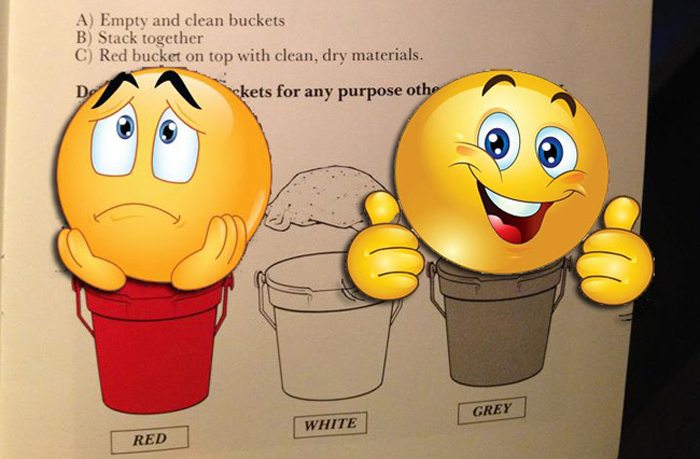
If you have ever worked on a cruise ship especially sailing in the US, you know the true meaning of the USPH inspection. Regardless of the cruise line or the ship, we are expected to maintain high standards of cleanliness. If you work on a seven-day cruise with the two American ports, that means that you are required to do two special cleanings per cruise. Of course, that mainly depends again on your position and department; some departments are involved more, and some less when it comes to USPH inspection.
We are doing USPH cleaning the night before arriving in US port. For example, if the ship arrives in Miami, Florida, on Sunday- on a Saturday night, there is special cleaning required to be done in all areas around the ship. In the lowest-paid position - the galley stewards pay the highest price. The dining room, bar department, and housekeeping department are always working really hard before the ship arrives in the US port.
Yet, the person that has the hardest task is definitely the galley steward. The biggest responsibility is a deep cleaning of all galley areas with hazardous chemicals. Before the ship arrives in the US port, all grease, oil, floors, sealing dirt, and thousands of plates and cutlery must be cleaned spotless. Moreover, the lowest-paid position on the ship is galley steward has the biggest job responsibility. It's simply ridiculous; the galley stewards are paid only $500 a month for 300 hours of hard, ridiculously difficult, dangerous, and hazardous work. When USPH inspectors come on board, they always check the cleanliness levels without prior notice. That is the reason that crew members need to maintain high standards. For example, when I was working as a bartender, we were doing the three-bucket system cleaning, with the chemicals, bleach, and green pad for scrubbing the floors, and fridges, seeling, and polishing the glasses.
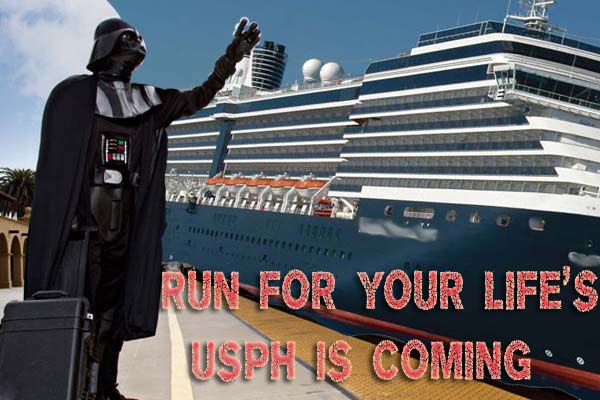
On some three-day voyages, the turnover was even crazier, and we were doing special cleanings every three days because those were the party cruises, and guests would come only for a quick party session with a lot of mess that we needed to deal with afterward.
What Happens if a cruise ship fails USPH Inspection?
I remember being on the ship when we failed the USPH inspection. Usually, the USPH inspectors would come onboard the ship twice a year, on average. But that is only sometimes like that, especially if the USPH inspectors are assuming that there were some cleaning inconsistencies with some ships during the previous inspections. If the ship scores below 85 or less points, that means that it did not satisfy the minimum requirements and failed the inspection.
The hotel director and the Staff captain would then hold an internal meeting with all department managers, and after all the ship departments would start a special cleaning process every single day, regardless of the port of call.
In some scenarios, the USPH inspectors would come to re-inspect the ship in 7 days, but sometimes it can take weeks or even months. During one of my contracts in Galveston, Texas, the ship failed the USPH inspection. Every day for the next four months, we did the daily deep cleaning of the bars, waiting for re-inspection. In practical language, that means staying extra 1 or 2 hours daily at work, with very demanding and difficult cleaning tasks with special chemicals used in the cleaning areas. The crew members were tired and exhausted. And how about the galley stewards on that ship? It was the most difficult job on the planet for those hard-working people. They stayed extra hours on their duties, deep cleaning the dining room galleys, drains, and oil from the metal ceilings; it was amazingly hard for them.
Every day, the three-bucket system was one of many problems. When you add on that arrogant, biased, untrained management which has got his job through some paisano business, things will get even harder.

I remember my manager calling me around 03:30 am in the nightclub while I was still doing the special cleaning. He said," You have to clock out now. Your working time is already in the red; it's 14 hours. Clock out and continue your cleaning."
Well, what am I supposed to say?
Of course, you clock out, and you keep cleaning. That night, I stayed in the nightclub until 05:30 am; we did a special cleaning with 3 bucket systems and polished all the glasses. On the weekly schedule, my working hours should end at 02 am that night, but you always stay 3 hours extra without being paid for it. And the day after was sea day my day started the same morning at the pool bar at 1130am. The ship which failed USPH inspections became one challenging experience. My job was probably not soo difficult compared to the galley stewards. Hopefully, one day, there will be some change in laws and regulations, especially with galley stewards. These working conditions on a daily basis are just far below acceptable normal human work, and how much more in the circumstances where the ship fails the USPH inspection. In that case, the heaviest load will fall on the shoulders of the galley steward, and most of the managers walk around the ship with the wrong perception of their work description. Instead of helping the crew members to cope with difficult tasks and not normal working hours, they even pour the salt on the wound because, in most companies, that is a proven way of getting promoted. Sustainable management should include helping the crew members do their jobs more efficiently but making it harder and more challenging. Unfortunately, the culture of the management of the cruise ships works completely opposite. If you fired 10 people, the office will say" Wow. This guy is good. He knows how to hold the whip in his hands, punish the crew, and keep them on their toes all the time."
The truth is, regardless of the business, if you own a small business or large cruise corporation, and if you don't manage it in an ethically sustainable way, it's just a matter of time before the business will go down. That is the unquestionable law of a healthy business mindset.
Stay focused and determined to achieve your goals. You are perfectly created; believe in yourself because sometimes nobody else will, especially on the cruise ship. Have a great contract, everyone!
Recent posts
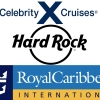
Hard Rock International Teams Up with Royal Caribb...
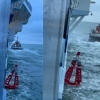
Iceland Releases Report on Norwegian Prima Near-Mi...

MSC Foundation and MSC Group to Build New Hospital...
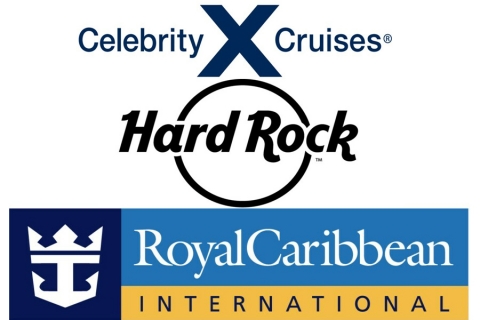
Hard Rock International Teams Up wi...

Related Articles

USPH Guidelines Preparation for Standard Port Health Inspection
Guidelines to prepare the vessel, vessel sanitation preparation list .
This document is a guideline to prepare the vessel for a P.H. inspection.
Pre-inspect three days before arrival in port.
Prepare a repair list if necessary for the staff Captain or Chief Engineer.
Conduct a department Head Meeting to discuss the results of the pre-inspection in the following areas:
Food handling
Cleanliness of departments, personal hygiene.
- Ensure that all refrigerators have thermometers.
- Ensure that there are no cleaning supplies in any department (except three step bucket system). This includes:
- Brooms, Mops and Deck Brushes
- Insecticide Sprays
- Ensure that there are no wooden utensils in use.
- Ensure that there is evidence in all Departments of utilization of the three bucket system.
- Ensure that there is one crew member stand by for each department.
- Ensure that all ready to eat items on the line have individual serving utensils.
- Ensure that no on duty crew member has rags in their trousers or utensils such as knives in their pockets.
- Ensure that no one opens the storeroom refrigerator. It is therefore recommended that the Food Manager keep the storeroom refrigerator key until the P.H. inspection is completed.
- Ensure that the approved sanitation menu for lunch is prepared the night before. Not cooked, only prepared.
- Ready to be cooked food is only to be moved from the refrigerator to the stove. It is not to be left out at room temperature.
- All drains are to be clear of food particles, and there is to be no water deposit.
- All air condition vents must be free of dust accumulation
- Check all exhaust filters in galley and also check for dripping grease from deck head.
- Ensure that refrigerator covers are clean.
- Check that no condensation is inside refrigerators.
- Ensure that refrigerator cover fans are clear of dust and rust.
- All personnel must have clean uniforms, aprons, hat and gloves. Further, they must maintain their personal hygiene.
- Ensure that all light fixtures are in satisfactory condition.
- Ensure that maximum lighting is exposed.
- A list of authorized personnel must be posted, and only those on the list are to report for duties, until the inspection is completed.
- Ensure that there is evidence clean and sanitized working utensils in each section.
- Keep the least amount possible of cooked food in the cooked food refrigerator.
- Ensure that there are enough pallets in all stations to ensure that nothing goes on deck.
- Especially the outside refrigerator in the storeroom.
- If there is an elevator, ensure that it is clean inside and is lifted to clean the bottom.
- No Lexan boxes are to be marked with markers.
- Ensure that all pots and pans in the pot washer are properly cleaned and sanitized; also ensure that there is a separation between clean and soiled.
- Cutting boards must be clean and sanitized. Never have all new cutting boards out for an inspection.
- Breakfast skillets must be in clean condition and after service are to go directly to the pot wash soil section.
- Ensure that only 4” and 6” Lexan boxes are utilized to keep food or sauces in refrigerators.
- All port holes must have fitting screen or kept closed.
- Bulk milk dispenser has to be served from bulk or in original container or refrigerated ½ pints.
- Ensure that there is no evidence of oven gloves in pastry or bakery shop.
- Cooks are not permitted to wear any sort of jewellery. The only exception is the cook doing poached eggs who is authorized to wear a watch.
- Ice blocks for decoration purposes must be isolated from food in deep freezer and on a pallet, a sign “Non potable Water” must be posted.
- All food handlers must know food temperature and their danger zone of 45° F to 140° F, and the three step systems and how to use it.
- A utility cleaner must be on standby in the breakfast line to pick up any soiled dishes or pans in the line. This will allow the breakfast cooks to only touch clean items and ready to serve food.
- All meats in the thawing room must be in clean containers a din separation. Example: Beef Veal Lamb Chicken, Fish and seafood are to be kept on different shelves.
- Nothing is to be in the thawing room in carton boxes or in their original box.
- Raw food and cooked food must be separated.
- All containers must have dates (Please do not use masking tape).
- All garbage cans must have leads.
- Clear paint from S/S surfaces.
- No utensils such as knives, ladles, etc. should be kept in Chefs Office or F&B Manager’s office, as well as liquors or anything used in food preparation.
- Ensure that there are no working utensils in buckets.
- All crew members must know about the three sink system and their temperature. (Water temperature 110F).
- Bakery shop must be ready to be inspected by 06:00 AM.
- No breakfast preparation is to be done after 06:30 AM. (Recommendation).
- Check pot wash area before arrival.
- Ensure that all boxes are closed in dry storeroom and all #10 cans and labels are straight.
- Ensure that pastry carts and baker carts are clean (especially the wheels).
- No blood is to be visible on or around items in the thawing room.
- We recommend a cabin inspection to ensure that crew accommodation is free of working utensils etc.
- Flour bin in baker shop must be clean and dry. Check the handle of the bin.
- All plastic and aluminium foil must be in original boxes.
- Avoid breakfast for waiters and busboys on sanitation day.
- Fire extinguishers must be clean.
- Remove pots and pans and trays without handles.
- Ice machines must be clean; they must have S/S scoops and a chain 6” from the deck.
- Check the Maître d’hôtel cabinet.
- No flambé cart.
- Ensure that the butter in the Dining Room is iced down.
SANITATION INSPECTION GUIDELINES
Personnel involved in food storing, preparation or service.
- Good Hygiene practiced: Uniforms clean, bath frequently, failing to cover their face when sneezing or coughing, wash hands often etc.
- Free: of infections and communication deceases.
- Prohibited: from eating, chewing gum, drinking or smoking in food preparation areas.
- Using: of plastic gloves when is needed.
- Handle: dishes and utensils in a sanitary manner.
- Parts: of dishes and utensils that will make contact with the consumer’s mouth should never be touched by a server.
- When: serving food always wash their hands after wiping tables or bussing soiled dishes.
Safe Food Service
- Before refrigerating potentially hazardous food make certain an internal temperature of 45° F or less will be maintained.
- Use extreme care in storing and handling food prepared in advance of service.
- Cook or heat process food to recommended temperatures.
- Make certain that hot-handling devices maintain food at temperatures of 140° F or higher.
- Heat left-over’s quickly to an internal temperature of 165° F.
- Avoid carrying contamination from raw to cooked and ready to serve foods via hands, equipment and utensils.
- Obtain food from approved sources.
Main Galley
- General appearance: Floors, walls, ceiling clean, roaches free, and maintained. Report any missing or broken tiles. Dailey dust removal-weekly scrubbing-periodic resealing.
- Plumbing: In good condition, leakage free, sufficient water supply. Hot water where needed. Drains clean and free of obstacles.
- Ventilation: Sufficient. Free of condensation and accumulation of dirt and grease.
- (Hoods and ducts clean unclogged and in good repair).
- Lighting: Sufficiently lit in all areas (report any burned or broken lamps).
- Food preparation and holding:
- Food preparation equipment: Keep them clean when not in use.
- Hot holding equipment: Maintain food at or above 140° F.
- Cold food: Held at 45° F (7.2° C) or lower. All refrigerators are equipped with thermometers.
- Equipment & Utensils not in use: Keep them clean and sanitized.
- Preparation Equipment: Clean and sanitize between changed uses.
- Fruits & Vegetables: Wash thoroughly prior to preparation and service.
- Food warmers, steam tables and bain-marie: In good condition and working order.
- Frozen food: Thaw properly under refrigeration or cold running water.
Sanitation Procedures
General cleanliness and sanitizing.
- Work tables/counters/shelves: Clean and sanitize after each use. Wash with hot water, rinse with clean water, sanitize with solution containing at least 100 PPM chlorine but no more than 200 PPM. Leave surface damp to permit the chlorine to effectively sanitize and air dry.
- Heat grinders/ slicers /meat choppers/mixers: Schedule regular clean up after each use.
- Dissemble parts and clean them completely. Operating correctly.
- Steam tables: Clean outside, free of lime scale inside.
- Coffee/tea urns: Flush out, clean, de-lime, rinse cloth filters in cold water.
- Stoves Grill and surrounding area: Free of burned food or grease. Clean drop pans when not in use.
- Steam cookers mixing vat: Clean inside and out. De-lime when necessary.
- Can openers: Clean, free of metal particles. Keep them sharp.
- Cutting boards: Free from splints, holes or cuts. Use separate for raw and cooked food.
- Clean and sanitize them after each use.
- Deep fat fryers: Clean inside and out.
- Shortening stained cleaned.
- Discard when necessary.
- Electrical fixtures-wiping: Dust free in good repair.
- Refrigerators: Max temperature 40° F. Keep them clean inside and outside. Gaskets in good condition. Keep food items inside covered containers not more than 4” high.
- Cooked or ready to eat food always stored on different shelves or above from raw food.
- Check food temperatures. Keep open period to a minimum.
- Ice machine/cuber: Clean inside and outside. Scoops fastened. Surrounding area clean.
- 2 & 3 compartment sink: Open sinks before use.
- Change wash and rinse water frequently.
- Check to be equipped with thermometer, wire basket and condition of mixing battery. Steam consumption adequately.
- Hand wash facilities: Make sure they do not use for any other purpose. Check for supply of soap, towel paper and waste receptacle.
- Also for sufficient supply of cold and hot water.
- Pot and dish glass washing area, dish washing procedure: Bushing:
- Glass/cups: Check if they handle them in racks to avoid chipping.
- Dishes/bowls/desert plates: Bus separate the ones with heavy soil.
- Glasses/Cups/Dishes/Silver and S.S. ware: Make sure that they are always pre-showered before using in the machine.
- Heavy soil and paper: Make sure that dishes are scraped into waste receptacles (pulper) before racking.
- Dishes placed in racks: All of one kind, each in line, no over crowd.
- Hollowware (cups/glasses etc.): Rack them up-side down so wash water can get in and rinse water gets out.
- Silver: Place them in racks with eating end up and never over crowded.
Operating machine
- Correct wash & rinse temperature: 140° F minimum wash. 180° F minimum rinse.
- Wash & rinse sprays: Check to be free of obstructions.
- Pre-rinse shower: Make sure that it operates correctly.
- Pre-wash water: Change it regularly.
Clean dish handling
- Dish carts: Check to be clean and place it at end of machine for easy loading.
- Dish handlers: Check that they clean their hands thoroughly and pick up dishes properly.
- Equipment and utensils (pots/plates/glasses etc.): Check that they are clean, self drain and dry in sufficient storage space.
Clean up dish/glass washing machines
- Cleaning: Clean properly each day. Wash and rinse arms cleaned out.
- Scrap trays: Keep them clean and in good condition.
- Tank drained: Hose out and clean strainer.
- Curtains: Clean them by scrubbing and hang to dry.
- Machine and tables: Wash with detergent solution and hose out (wiped dry).
- Sanitary equipment: Operating satisfactory.
- Ventilation/lighting: Adequate.
- Toilet door: In good working order.
- Hand wash facility: Make sure that it is always equipped with soap and tissues.
- Hot and cold running water: Adequate.
Garbage storage
- Waste containers: Make sure that there are sufficient for each area. Check to be leak proof, keep them covered when not in use. Clean them when empty and label them according to their use.
Garbage room
- Generally: Make sure that the room is kept clean and orderly. Free of spilled food and
- Liquids and avoid accumulation of garbage.
- Trash and garbage containers: Clean them on the outside.
- Garbage container bags: Close them air tight without leaking.
Walk-in refrigerators general
- Thermometers: Check regularly inside/outside. Log to a report.
- Doors: In good working order, gaskets clean and maintained. Open doors only when necessary.
- Cold curtains: Are clean and in good condition.
- Lighting: Adequate, report any burned or broken light bulbs.
- Floor: Clean and dry. Report any missing or broken tiles.
- Ceiling/walls/shelves: Free of condensation. Clean and sanitized on a regular basis.
- Never fill refrigerators beyond their capacity.
- Follow the rule first in - first out.
- Keep food in their original cartons or in clean wrappers or covered containers.
- Place in a way to allow circulation of cold air among them. Foods that are packed tightly may begin to defrost.
- Separate ready to eat or prepared food from raw food.
- Never store food items inside ice block room. Do not use ice blocks for human consumption.
- Defrost when necessary to eliminate excessive frost build up. If practical defrost when
- Least amount of food is in storage.
- Defrost food items always at temperature 45° F max. Not outside.
CHECKLIST FOR MAIN GALLEY
Walk in refrigerators.
- Accurate inside Thermometer in place.
- Temperature at or below 40° F.
- No bad odours in room.
- No ice built up on compressor.
- Food storage allows good air flow.
- All food containers covered.
- Nothing stored on deck.
- Shelves clean and in good repair.
- Raw and ready to eat food stored separately to assigned areas.
- Meat and fish stored separately to assigned areas.
- Deck clean and in good repair.
- Lighting adequate.
- Rubber seals on doors are clean and in good repair.
Pantry Appetizer
- Stainless steel benches are clean.
- Refrigerators are clean, containers covered and clean.
- No personal items stored in the area.
- All machines are clean, disinfected (Hobart, slicer etc.)
- Deck clean in alleyways, no dirt in corners.
- All debris removed from deck.
- Food preparation sink and hand wash basins clean.
- Deck heads clean, no residues.
- Drainage system, waste-pipes are clean.
Pantry Buffet, Vegetables station, Roast man station:
- Refrigerators are clean and in good repair.
- All containers are covered.
- Food preparation sink is empty and clean.
- Drainage system, waste-pipe are clean, no food or dirt stuck.
- Hobart mixers are clean and disinfected.
Pantry Salad, Pantry sandwich
- All food containers are covered.
- Stainless steel benches are clean and disinfected.
- Slicer machine is clean.
- Deck and alleyways are clean and in good repair.
- Drainage system, waste-pipe clean.
- Galley shelves are clean.
- Deck clean under deck and fridges.
- Coffee machines are clean, no filter inside.
- Dropper cleaned and sanitized.
- Juice machine clean, concentrate container empty.
- Ice machines are clean, rubber seals in good repair.
- Stainless steel benches clean, chlorine are to reveal.
- No sauce, goose neck etc. are stored.
- Locker below coffee machines are tidy, items stored properly.
- Drainage system clean.
Ice cream station
- Freezer clean, ice cream containers are covered.
- Ice cream machines are properly cleaned, rotating part & rubber seals.
- Deck, alleyways & drainage system clean.
- Stainless steel table clean & sanitized.
Dish/Pot wash area
- Machines are clean & sanitized.
- Rubber curtains in the machines are clean & right placed.
- Racks are clean & properly stored.
- Dishes/pots are stored as outlined in the Vessel sanitation regulation.
- Deck & hand wash basins are clean.
- Soup stations clean, kettle in good repair.
- Ovens, grill, roast station clean.
- Steam (hot) table clean, twice a week cooked out lime way.
- Stainless steel tables cleaned & disinfected.
- Deck, deck head & drainage clean.
- Lines are clean no food items left outside.
- Salamanders clean, nothing stored in them.
- Cleanliness of Chef's Office.
Bakery/Pastry
- Ovens & fridges are clean.
- Stainless steel tables are clean, no object that do not belong stored there.
- No open tins or cans.
- Pastry floor and walls must be clean, good airflow.
- Rotating roll clean.
- Basins & sinks are clean.
- Cold table on the front clean & sanitized.
Cruise Ship Inspection Scores & Information
- Inspection Scores
- Cruise Line Directory
- Green Sheet Report
- Cruise Ship Scored 100
- About Inspections
- Inspections
On this Page
What do VSP inspectors look at during a periodic sanitation inspection?
How often are ships inspected?
Do ships know when the inspection will occur?
How are cruise ships scored?
Are ships required to correct violations found during inspections?
What happens if a ship fails an inspection?
When would VSP recommend that a ship not sail?
Where can I find inspection scores and reports?
How much do inspections cost?
- When do construction and renovation inspections occur?
- What’s involved in a construction or renovation inspection?
- How much do construction/renovation inspections cost?
Periodic Operational Sanitation Inspections
Why does the Vessel Sanitation Program (VSP) conduct operational sanitation inspections?
VSP inspectors conduct operational sanitation inspections to determine how well ships are operating and maintaining sanitation standards in accordance with the current VSP Operations Manual [PDF – 2.9 MB] .
Inspectors provide public health guidance to cruise ship staff when standards are out of compliance. At the end of inspections, inspectors write a report describing inspection findings and recommendations.
Inspections are unannounced, and they are done while a ship is in a U.S. port.
Depending on the size of the ship, one to four inspectors examine the ship to see if it complies with the public health standards found in the current VSP Operations Manual [PDF – 2.9 MB] .
VSP inspects eight major areas on ships:
At the end of each inspection, VSP inspectors meet with ship management to discuss inspection violations and give them a draft inspection report. Within 2 weeks of the inspection, VSP sends a final copy of the inspection report to the ship’s cruise line.
Cruise ships under VSP’s jurisdiction are subject to two inspections each year. If a ship sails outside of the United States for an extended period of time, it may not be inspected twice a year, but it will be inspected again when it returns to the United States.
No. The twice-yearly inspections are unannounced.
Cruise ships are scored on a 100-point scale. Inspection criteria are defined in the current VSP Operations Manual [PDF – 2.9 MB] . Criteria are assigned a point value; when there’s a violation, inspection points are deducted from the score.
Points are deducted from that score based on public health significance. An 85 or below is a failing score. All scores are posted on the VSP website.
Yes. Although ships are responsible for correcting all violations, some critical violations must be corrected immediately. Each ship must submit a Corrective Action Statement describing how the violations were corrected.
Some violations can be corrected during the inspection; others may take longer to correct.
Ships that fail inspections are reinspected within a reasonable time period.
VSP may recommend that the ship not sail if there are imminent public health risks including the following:
- Inability to properly chlorinate potable (drinking) water.
- Inability to keep food within safe temperatures.
- Inadequate facilities for cleaning and sanitizing equipment.
- Inability to properly dispose of solid or liquid waste.
VSP may also recommend a ship not sail during an infectious disease outbreak where continuing normal operations may subject newly arriving passengers to disease.
Inspection reports and scores as well as corrective action statements are available on the VSP website .
Cruise ship owners pay a fee based on the ship’s size for operational inspections and reinspections.
Schedule, October 1, 2017-September 30, 2018
Fee Schedule for Each Vessel Size
1 Gross register tonnage in cubic feet, as shown in Lloyd’s Register of Shipping.
The fee schedule is also posted in the Federal Register .
Consultation for Construction and Renovation
What’s involved in the construction and renovation process?
At the cruise industry’s request, VSP provides consultation during cruise ship construction and renovation. We analyze the ship’s design during plan reviews to eliminate environmental health risks and to incorporate modifications that create healthy environments.
VSP involvement may include
- review of construction/renovation plans and
- technical support through emails and phone calls.
Construction plan reviews are based on the current VSP Construction Guidelines [PDF – 2.9 MB] . VSP generally focuses on the following areas during these reviews:
How much do construction/renovation plan reviews cost?
VSP does not charge a fee for plan reviews or consultations related to renovations or new cruise ships.
Top of Page
- Gastrointestinal Illness Surveillance and Outbreak Investigations
- Training of Cruise Ship Supervisory Employees
- Health Education and Public Information
File Formats Help:
- Adobe PDF file
- Microsoft PowerPoint file
- Microsoft Word file
- Microsoft Excel file
- Audio/Video file
- Apple Quicktime file
- RealPlayer file
- Zip Archive file
- Page last reviewed: February 14, 2017
- Page last updated: July 18, 2017
- National Center for Environmental Health, Division of Emergency and Environmental Health Services


Oceania Vista Earns Perfect 100 USPH Inspection Score
- September 23, 2023
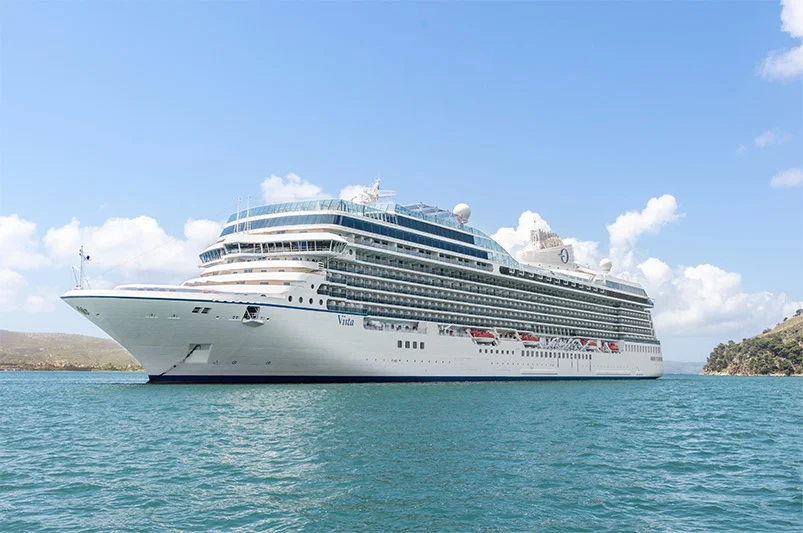
Oceania Cruises has announced that the Vista secured a perfect score of 100 during the luxury vessel’s recent United States Public Health (U.S.P.H.) inspection conducted by the U.S. Centers for Disease Control and Prevention (CDC).
The Vista’s unannounced U.S.P.H. inspection was held on September 20, 2023, while the ship was in Boston, Massachusetts, during the third day of an 11-day inaugural U.S. and Canada cruise.
To earn a 100 score, cruise ships must receive perfect marks on all 44 items that comprise the U.S.P.H.’s comprehensive Vessel Sanitation Program checklist, the company said.
The unannounced inspections, which are conducted twice yearly and are required for any cruise ship with an international itinerary calling at a U.S. port, evaluate vessels in a wide variety of areas, including adherence to proper food handling, preparation and storage procedures, and overall galley cleanliness. In addition, ships’ potable water supplies used in spas and pools are evaluated.
“We couldn’t be prouder to achieve a perfect 100 in the United States Public Health inspection for our luxurious new ship, Vista,” commented Frank A. Del Rio, President of Oceania Cruises. “Everyone on board works hard each and every day to ensure the highest of standards are reached. A score of 100 carries considerable magnitude, and we applaud the entire crew and officers aboard Vista for this stellar achievement.”
Vista Captain Luca Manzi added, “I cannot thank my team enough for their dedication, commitment and for going the hard yards to ensure that this beautiful vessel of ours is acknowledged for being one of the cleanest ships in the fleet.”
Cruise Industry News Email Alerts
- Breaking News
Get the latest breaking cruise news . Sign up.
54 Ships | 122,002 Berths | $36 Billion | View
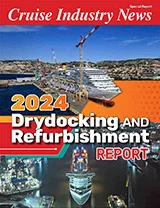
Highlights:
- Mkt. Overview
- Record Year
- Refit Schedule
- PDF Download
- Order Today

- 2033 Industry Outlook
- All Operators
- Easy to Use
- Pre-Order Offer
- Advertising
- Cruise News
- Magazine Articles
- Quarterly Magazine
- Annual Report
- Email Newsletter
- Executive Guide
- Digital Reports
Privacy Overview

Cruise Ship Health, USPH and Vessel Sanitation Program
Understanding cruise ship health is critical not only for crew members, but also for those seeking to work on a cruise ship. From personal hygiene and frequent hand-washing to sanitization and proper food handling, there are plenty of policies, procedures and regulations to keep a cruise ship healthy.
Cruise Ship Health: Overview
In discussing cruise ship health, we often use the following acronyms: USPH is United States Public Health, sometime referred to as “Port Health.” This relates to the port authorities that go on board a cruise ship to conduct inspections. These inspections are carried out by a sector of the Center for Disease Control ( CDC ) called the VSP or Vessel Sanitization Program.
Cruise ships must comply with international and port state controls regarding public health which means inspection scores are also public. Although most cruise ships in the Cruise Lines International Association (CLIA) report scores of close to 100%, there are the occasional ships that encounter an outbreak. Therefore cruise ship health is reported by the news when it occurs.
Cruise Ship Health in the News
Typically the media only covers the negative stories that relate to cruise ship health, sensationalizing Norovirus outbreaks on specific ships. The reason that you hear about the incidents through the news is because cruise ships are required by law to report any gastrointestinal illness to the CDC. Hotels, resorts, and airlines do not need to report this type of information which is why they are rarely covered by the media.
Acording to an online maritime magazine, Marine Link, “…an average of 17 cruises are cancelled every year due to Norovirus outbreaks, costing the cruise ship industry millions of dollars.” In fact, “…by the end of August 2012, there had been 11 cruises that had Norovirus outbreaks” according to the CDC.
Considering the number of ships and how many cruises offered each year, that’s a reasonable percentage.
Cruise Ship Illnesses
A cruise ship is a closed environment where viruses can breed quickly, similar to schools, daycares, nursing homes and hospitals. The cruise ship does a lot to prevent viruses from coming on board as well as takes measures to prevent viruses from spreading.
To start, prior to a passenger boarding a cruise, they must complete a health questionnaire and attests to the fact that they are not and have not been sick recently. If they report that they have been ill, they can be denied boarding. This can lead to passengers lying on their questionnaire.
Once on board, not all passengers follow proper and frequent hand-washing practices, which may lead to the spread of viruses. Viruses can be spread by using the tongs in the buffet, holding stairway and corridor handrails, pushing elevator buttons, opening doors, touching surfaces in the public restrooms, and using the same toys in the children’s center.
When someone is ill on the ship and it is reported to the medical department, a sanitation procedure is conducted along with a reporting procedure. Cabin stewards, waiters, youth counsellors and other cruise ship employees must also report to their supervisor (who will report to the medical department) if they know of an individual that has diahrrea or has been vomiting. These are signs of influenza or a gastrointestinal disease such as Norovirus.
The cruise ship cabin of an infected passenger or crew member must be sanitized and individual must be quarantined to their cabin. Children that have been sick must have a doctor’s note to prove that they are well enough to participate in the onboard youth programming.
The medical team must keep track of all reportable cases for both passengers and crew. The ship will operate under “red”, “orange” or “yellow” conditions, depending on how many of the ship’s passengers and crew are infected by a virus. The color-coded system is not only a guideline for specific sanitization procedures but also to alert officers to stay away from passenger areas such as the gym and buffet.
Additionally, cruise ships must report the total number of gastrointestinal (GI) illness cases evaluated by the medical staff before the ship arrives at the next port. When there are 2% of the passengers and crew with symptoms of diarhea during the voyage, the ship must also report the number to the CDC. When the percentage is at least 3% the CDC will conduct an investigation.
CDC Vessel Sanitation Program
Besides conducting investigations into disease outbreaks, the CDC is also responsible for the Vessel Sanitation Program (VSP), which assists the cruise industry to prevent and control GI illnesses on cruise ships. This branch of the CDC conducts periodic and unannounced cruise ship inspections. The majority of cruise ships average about 97%.
The Vessel Sanitation Program inspections take five to eight hours to complete. They inspect the following areas:
- Potable water supply
- Food storage and preparation
- Food service
- Employee’s personal hygiene practices
- Cleanliness of the ship
- Outbreak response procedures
- Ventilation hygiene
- Children’s center hygiene and sanitization procedures
- Pest control
- Crew training
Stay Healthy Working on a Cruise Ship
It’s in the interest of both the cruise ship and the crewmember to stay healthy while working on board. Not only does the management not want their crew or passengers to be sick, no one likes to be sick either. The cruise ship officers and crew do their best to keep the ship healthy by following the guidelines set out by the Vessel Sanitization Program. Unfortunately, some passengers embark on their cruise sick and then the contamination begins.
Both passengers and crew can protect themselves by practicing frequent and proper hand-washing. Using sanitizer before entering food service areas is another way to control the spread of viruses. In addition, crew are administered mandatory flu shots as well are not allowed to join a ship without a medical certificate that attests to their health.
We use cookies to ensure that we give you the best experience on our website.
- Skip to main content

- Find a Lawyer
- You've been hurt. Now what?
- Do I have a claim?
- Finding the best attorney to represent you
- Dealing with Insurance
- Laws by State
- Car accident
- Truck Accident
- Workplace injury
- Wrongful death
- Common work injuries
- Finding the best workers’ comp lawyers
- How workers’ comp benefits work
- Personal injury vs. workers’ compensation
- Spinal Cord/Column
- Brain Injury
- Occupational injuries
- Questions & Answers
- Tell Your Story
- Forms and Worksheets
- For Students
- Become a Partner
- Join lawyer directory
- Compare plans and features
- Guest blogging for attorneys
- Enjuris Excellence badge
Guide to Cruise Ship Accident Lawsuits
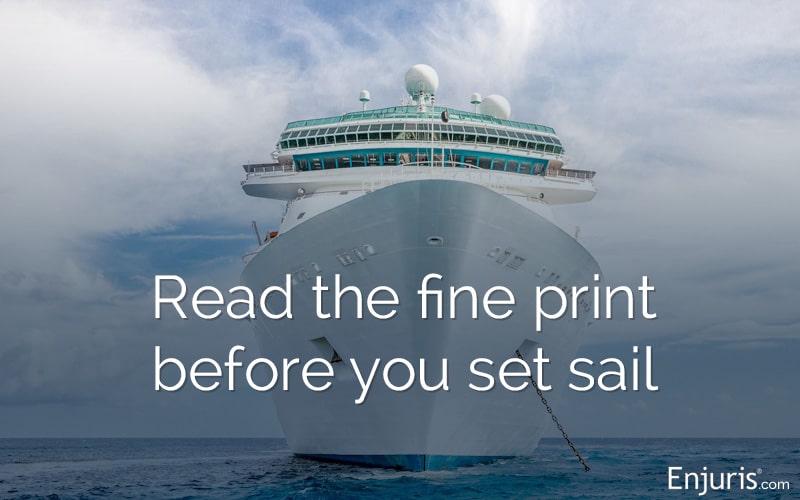
All aboard! But read the fine print first.
More than 14 million Americans went on a cruise in 2019. That number was just above two million in 2021, likely lower because of health concerns and economic fallout from the COVID-19 pandemic. Worldwide, the cruise industry accounts for about 30 million passengers a year.
Two million travelers is no small number, and it’s likely to rebound to previous levels as the pandemic falls to the rearview mirror and people resume vacations and activities they used to enjoy.
There are lots of reasons why cruising is appealing to so many people—whether you look for a Disney-style cruise where there are plenty of activities for your kids (so you can get some much-needed relaxation for yourself while they’re occupied!) or you’re an older adult who wants to see the world without the hassle of navigating your own travel.
Cruising is overwhelmingly safe. The U.S. Department of Transportation reported 81 “serious” injuries aboard cruise ships in 2019. This includes fatalities, injuries that required more than basic first aid, or manage damage to the ship. These injuries only include those reported to the U.S. Coast Guard, though there were other injuries that happened that were not reported.
The majority of injuries that happen aboard or related to cruise ships are slip-and-fall injuries on wet decks or stairs, food poisoning, recreational accidents, and similar.
Most common cruise ship injuries
You can be injured on a cruise ship in many of the same ways you could be injured if you’re staying in a vacation resort or participating in any type of recreation.
Here’s a look at some typical injuries that cruise ship guests can suffer while traveling:
Slip and fall accidents
A slip and fall accident could happen anywhere. On a cruise ship, there are certain hazards that are specific to that type of environment. For instance, there could be luggage in hallways that cause a tripping hazard, or there could be wet or slippery floors.
Food poisoning
Food needs to be transported on the ship and should be handled and stored properly and in the correct temperature. But there have been instances of mishandled, poorly prepared or incorrectly stored food that have made people sick onboard.
Legionnaire’s Disease
Legionella organisms live within aerosolized water. Cruise ship travelers rely on potable water, and it could become contaminated with this dangerous bacteria. Inhaling or aspirating contaminated water could cause some to become ill with a pneumonia-like disease. If the water on the ship becomes contaminated with Legionella, it can spread from pools, hot tubs and showers.
Drowning can be an issue near any body of water—surely, accidents happen in pools on cruise ships—but if a passenger falls overboard, it’s a much higher risk.
Cruise ships are isolated from the rest of the world, but with ships that can carry up to 4,000 passengers, they operate like a small town.
With that many people in close quarters, sometimes intentional torts take place. Passengers have reported injuries from assaults, either by crew members or other passengers. These types of incidents can result in both physical injury and emotional trauma .
Recreational activities
Cruise ships typically offer activities like rock climbing, rappelling, water sports, and even sky rides. Any of these can be inherently dangerous and passengers occasionally become injured.
Passenger “disappearance”
There are some well-known cases of passengers who seemingly vanished from a cruise ship.
While these frightening stories aren’t common, they do happen and questions arise about who is liable for these individuals’ deaths .
Can you file a lawsuit for a cruise ship injury?
Yes, but it might not be as straightforward as a typical personal injury lawsuit .
When you purchased your cruise tickets, there was likely a forum selection clause buried in the fine print. There could be language that limits where you can file a legal claim.
Cruise lines can include a “choice of law clause.” That means the cruise line could specify in what country a lawsuit must be filed... and if you’re a resident of the U.S. but the cruise line wants to apply Italian law, you could be out of luck. Italian law, for instance, caps the liability of cruise lines at $568,000.
Paul Turner v. Costa Crociere S.P.A. (U.S. Court of Appeals for the 11th Circuit)
A decision issued in 2021 settled the question of forum selection clauses in cruise ship contracts. Plaintiff Paul Turner filed a class action lawsuit in Florida claiming that the cruise line’s negligence contributed to an outbreak of COVID-19 during a trip that began on March , 2020.
However, the case was dismissed based on the forum selection clause, not on the merits of the claim.
The relevant locations are:
- The cruise line’s parent company headquarters was in Italy
- The operating subsidiary was headquartered in Florida
- The cruise departed from Fort Lauderdale, Florida
- The cruise concluded in the Canary Islands (part of Spain)
There was a clause in the purchased ticket specifying that any dispute would be resolved by the court in Genoa, Italy and a choice-of-law provision that selected Italian law.
The Eleventh Circuit dismissed Turner’s case, siding with the cruise line. The court held that the Italian forum selection clause was valid.
Was the cruise line negligent?
Things happen, and sometimes it’s not anyone’s fault—it could be a pure accident.
For instance, in a news story published on April 4, 2023, a passenger on a Virgin Voyages cruise ship fell over their balcony shortly after their departure. The ship had recently left Miami en route to Honduras. The passenger died after falling from the balcony to the lower deck.
The cruise line did not immediately release details out of respect for privacy, but the spokesperson said that it’s possible that a medical emergency caused the person to fall. People can get sick and have medical emergencies on cruise ships just as they would on land, and sometimes things happen that cannot be prevented.
However, a passenger has an expectation of reasonable safety measures that should be taken by the cruise line. These include:
- Access to reasonable emergency medical services
- On-site medical facility with intensive care unit (ICU)
- At least one doctor and nurse on board
- Access to bandages, medicine, etc.
- Cardiac defibrillators
In addition to ensuring access to treatment in the event of an emergency, a cruise line is also responsible for maintaining safe and hazard-free premises for passengers and crew.
Premises liability claims for cruise ship injuries
Premises liability is the area of law that covers injuries resulting from a property hazard. Slip-and-fall accidents would likely be in this category, along with swimming pool accidents, injuries from falling objects, and so on.
The property owner (in this instance, the cruise line) is responsible for ensuring that guests on the property are safe from harm. If there is a hazardous condition, such as a known wet, slippery floor, then the cruise line has a responsibility to notify passengers and crew by posting signs or through other means.
What to do after a cruise ship accident
The first priority after any accident or injury is to seek medical treatment. Any crew member on the ship should be able to direct you to the appropriate place or person who can provide care.
You should also report the accident immediately. By alerting the cruise ship operator, it requires the company to conduct an internal investigation. If there’s any criminal activity, a cruise line with ports in the U.S. must report it to the FBI.
If you can collect some evidence, including photos of the scene of the accident, this could be important if you file a claim. You also want to take names and contact information of anyone who witnessed the accident. You should also make sure to maintain copies of any medical records created on the ship or at a port related to the accident.
When you return from your trip, seek the guidance of a personal injury lawyer . Your lawyer will assist with jurisdictional issues related to your claim and help you to recover compensation for your injuries.
- Vessel Reviews
- Passenger Vessel World
- Offshore World
- Tug and Salvage World
- Maritime Security World
- Specialised Fields
- Marine Projects World
- Small Craft World
- Tanker World
- Dry Cargo World
- Boxship World
- Aquaculture World
- Trawling World
- Longlining World
- Seining World
- Potting World
- Other Fishing Methods
- Regulation & Enforcement
- Feature Weeks
- Classifieds
- Book Reviews
VESSEL REVIEW | Sinichka – Electric commuter boats designed for Russia’s Moskva River
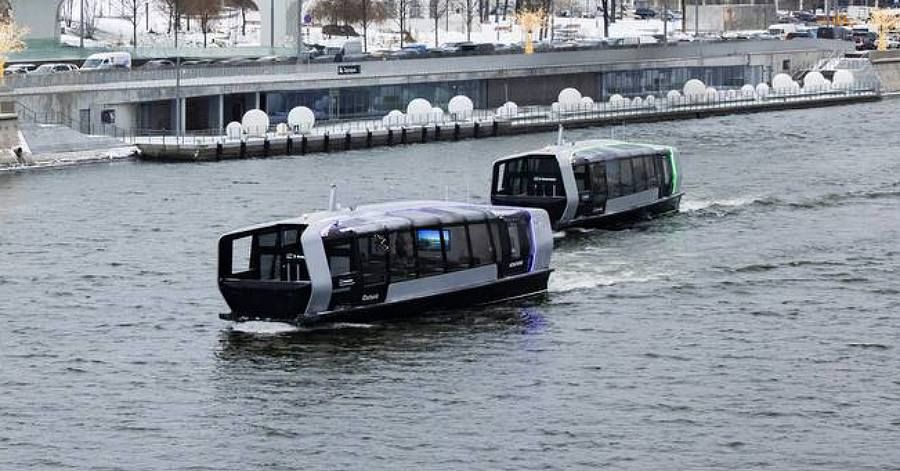
A series of three new electric monohull commuter ferries have already begun operational sailings on the Moskva River in the Russian capital Moscow.
Built by Russian shipyard Emperium, sister vessels Sinichka , Filka , and Presnya – all named after rivers in Moscow – are being operated by the Moscow Department of Transport and Road Infrastructure Development (Moscow Deptrans). They are the first units of a planned fleet of 20 vessels that will serve the capital city and other nearby communities. The new ferry system will be the water transport system to be operated on the Moskva River in 16 years.
Each vessel has a welded aluminium hull, an LOA of 21 metres, a beam of 6.2 metres, a draught of only 1.4 metres, a displacement of 40 tonnes, and capacity for 80 passengers plus two crewmembers. Seating is available for 42 passengers on each ferry, and the main cabins are also fitted with USB charging ports, wifi connectivity, tables, toilets, and space for bicycles and scooters. The cabin layout can be rearranged to allow the operator to adjust the distances between the seats and to install armrests of varying widths.
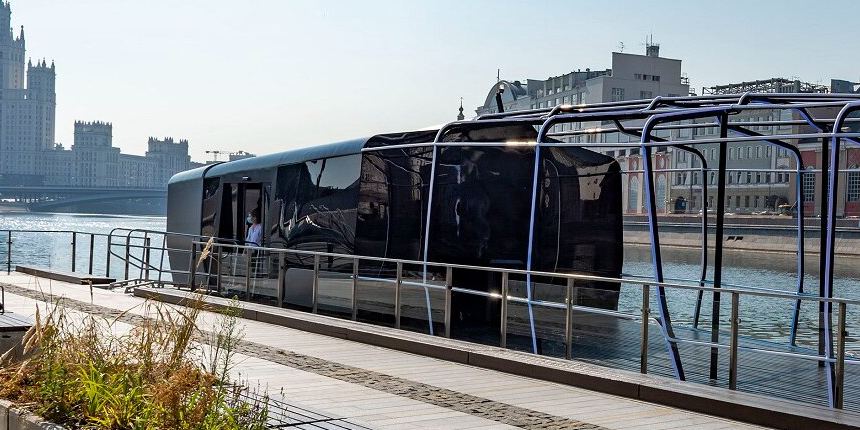
An open upper deck is also accessible to passengers and is the only area on each ferry where smoking is allowed.
The ferries are all of modular construction with each ferry’s wheelhouse, main cabin, and other structural elements being built as complete, separate components. This enables the ferries to be easily dismantled for transport to anywhere in Russia by rail and then quickly re-assembled within seven days.
The ferries are also ice-capable. Recently completed operational trials on the Moskva showed that the vessels can also easily navigate under mild winter conditions with broken surface ice, though year-round operations are planned for the entire fleet.
The ferries are each fitted with 500kWh lithium iron phosphate battery packs that supply power to two 134kW motors. This configuration can deliver a maximum speed of 11.8 knots, a cruising speed of just under 10 knots, and a range of 150 kilometres.
Emperium said the transfer of rotation of electric motors to the propeller is carried out by direct drive. As a propulsion installation, a pulling rotary propeller-steering column with double screws is used. The installation of double pulling screws, with similar power, allows an operator to increase the efficiency of the propulsion system to deliver a slightly higher speed or to reduce energy consumption. This arrangement also provides the ferries with enhanced manoeuvrability necessary for navigating in close quarters.
The batteries themselves have projected service lives of 10 to 12 years and are fitted with safety features such as built-in fire extinguishers and gas vents. Quick-disconnect features allow the batteries to be easily removed for replacement or maintenance.
Some of our readers have expressed disquiet at our publication of reviews and articles describing new vessels from Russia. We at Baird Maritime can understand and sympathise with those views. However, despite the behaviour of the country’s leaders, we believe that the maritime world needs to learn of the latest developments in vessel design and construction there.
Click here to read other news stories, features, opinion articles, and vessel reviews as part of this month’s Passenger Vessel Week.
Related Posts

Baird Maritime
Tags: Emperium Filka Moscow Moscow Department of Transport and Road Infrastructure Development Moskva River Presnya Russia Sinichka WBW newbuild
- Previous VESSEL REVIEW | Ferry Rokko – Second 194m Ro-Pax for Miyazaki Car Ferry
- Next Brighton man to be charged for illegal abalone haul

Baird Maritime , launched in 1978, is one of the world's premier maritime publishing houses.
The company produces the leading maritime new portal BairdMaritime.com , home of the world famous Work Boat World, Fishing Boat World, Ship World, Ausmarine, and Commercial Mariner sub-sites, and the industry-leading ship brokerage platforms WorkBoatWorld.com and ShipWorld.com .
Contact us: [email protected]
© Copyright - Baird Maritime
- Terms & Conditions
- Advertise with Baird Maritime
- Submit News/Leads
- CruiseMapper
- Cruise Ports
- Russia Rivers Cruise Ports
Moscow (Russia)
Cruise port schedule, live map, terminals, news.

Region Russia Rivers
Local Time 2024-04-27 04:59
Moscow is a Volga River cruise port, Russia's capital and largest city (population over 12,2 million, metro 17 million). Moscow City covers a total area of approx 2610 km 2 (970 mi2). By population, the city is ranked the world's 14th largest. Moscow is one of the Russian Federation's all 3 federal cities - together with St Petersburg and Sevastopol .
Being Russian Federation's capital, Moscow is a major economic, political, scientific and cultural center, as well as Europe's biggest city.
According to Forbes 2013, Moscow has been ranked as the 9th most expensive city in the world by Mercer and has one of the largest urban economies, being ranked as an alpha global city according to Globalization and World Cities Research Network. It is also one of the fastest-growing tourist destinations in the world according to MasterCard Global Destination Cities Index. Moscow is the northernmost and the coldest megacity and metropolis on the Earth. It's home to Ostankino Tower, the tallest free-standing European structure; the Federation Tower, the tallest European skyscraper; and the Moscow International Business Center.
Moscow is situated on Moskva River in the Central Federal District of European Russia, which makes it the most populated inland city in the world. Moscow city is well known for architecture, particularly its historic buildings like Saint Basil's Cathedral. With over 40% of its territory covered by greenery, it's one of the greenest capitals and major cities in Europe and the world. Moscow is the seat of power of the Russian Government, being the site of Moscow Kremlin, a medieval city-fortress that is now the residence of the President of Russia. Moscow Kremlin and Red Square are among the several World Heritage Sites in the city.
Moscow has 2 passenger terminals, North River Terminal (Rechnoy vokzal) and South River Terminal. The regular ship routes and cruises along Moskva and Oka rivers are used mostly for entertainment. North River Terminal (1937-built) is currently the main hub for long-range routes along the river. There are 3 freight ports that serve Moscow.
In late-July 2021 the city announced plans to incorporate a fleet (unspecified number) of fully electric passenger ferries into its public transportation network from summer 2022, the goal being to reduce the dependence on cars.
- The boats are designed with length ~22 m (72 ft), passenger capacity 42, modern amenities (Wi-Fi, USB charging points, tables for working commuters), spaces for storing scooters and bicycles.
- Moscow Transport confirmed that two routes (with max daily capacity ~16,000 passengers) have already been mapped out.
- Passengers will be able to pay via bank cards, the city’s Troika card (smart card for travel by any public transportation) or biometric payment cards. Those with monthly/yearly public transit tickets will use the boats at no extra cost.
- The new electric ferry service is up to 5 times faster (in comparison to other city public transports) and ~2 times faster than by car.
Moscow cruise terminal
Moscow's cruise terminal is called North River Terminal or River Station ("Rechnoy Vokzal" / "ÑеÑной вокзал").
The terminal was opened in 1937 and is one of 2 passenger terminals (the other being South River Terminal) of the city's river transport. North River Terminal is the main hub for long-range (including cruise) shipping routes.
South River Terminal (above photo) was opened in 1985.

Moscow launches electric ferry service in 2022
Russia's capital city Moscow plans to incorporate a fleet of fully electric passenger ferries into its public transport network from summer 2022...
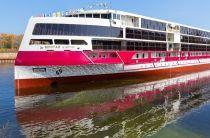
Vodohod’s first Project PV300 river ship departs on maiden cruise
Project PV300 built by United Shipbuilding Corporation's Krasnoye Sormovo Shipyard (Sormovsky-Nizhny Novgorod, Russia) and recently delivered to...
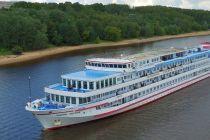
Emerald Waterways opens bookings for 2021 Russian River Cruises
The premium brand Emerald Waterways opened bookings for its 2021 Russian river cruise season. Voyages will feature a newly chartered...

Vodohod’s Mustay Karim cruise ship to be delivered by July 10
Russia's largest cruise company and tour agency Vodohod expects its newbuild cruise ship MS Mustai Karim (currently under construction at Nizhny...
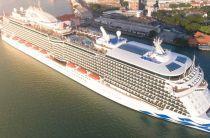
2018 FIFA World Cup Games to Be Shown Aboard Princess Cruises Ships
Princess Cruises passengers sailing all over the world will spectate and cheer on their favourite teams during the single largest tournament of the...
- show more news
Moscow - user reviews and comments

IMAGES
VIDEO
COMMENTS
Prevent gastrointestinal (GI) illnesses on cruise ships. The CDC Vessel Sanitation Program (VSP) helps the cruise ship industry prevent and control the introduction, transmission, and spread of GI illnesses on cruise ships. Learn more about VSP, including inspections, GI illness surveillance, and outbreak investigations.
The Ship Score of 100 report shows data on a rolling 12-month basis. Advanced Search | Ship Scored 100 | Green Sheet | CDC Home | VSP Home. Cruise Ship. Cruise Line. Date. Norwegian Breakaway. Norwegian Cruise Lines. 2/25/2024.
VSP inspectors conduct operational sanitation inspections to determine how well ships are operating and maintaining sanitation standards in accordance with the current VSP Operations Manual. Inspectors provide public health guidance to cruise ship staff when standards are out of compliance. Inspections are unannounced, and they are done while a ...
The following countries currently implement the American Public Health standard: These kind of inspections must be expected in every country worldwide. The authorities have the right to make such inspections and do so at will. USPH Manuals & Instructions. United States Public Health documents online and ready for download.
In some scenarios, the USPH inspectors would come to re-inspect the ship in 7 days, but sometimes it can take weeks or even months. During one of my contracts in Galveston, Texas, the ship failed the USPH inspection. Every day for the next four months, we did the daily deep cleaning of the bars, waiting for re-inspection.
Cook or heat process food to recommended temperatures. Make certain that hot-handling devices maintain food at temperatures of 140° F or higher. Heat left-over's quickly to an internal temperature of 165° F. Avoid carrying contamination from raw to cooked and ready to serve foods via hands, equipment and utensils.
Inspection Fees. Cruise ship owners pay a fee based on the ship's size for operational inspections or reinspections. VSP does not charge a fee for plan reviews or consultations related to renovations or new cruise ships. Fee Schedule, October 1, 2017-September 30, 2018. Fee Schedule for Each Vessel Size
Recommend on Facebook Tweet ShareCompartir. The Vessel Sanitation Program (VSP) at the Centers for Disease Control and Prevention (CDC) assists the cruise ship industry to prevent and control the introduction, transmission, and spread of gastrointestinal (GI) illnesses on cruise ships. VSP operates under the authority of the Public Health ...
How much do inspections cost? Cruise ship owners pay a fee based on the ship's size for operational inspections and reinspections. Fees. Schedule, October 1, 2017-September 30, 2018. Fee Schedule for Each Vessel Size. Vessel Size (GRT 1) Inspection Fee; Extra Small (<3,000 GRT) US$1,495: Small (3,001-15,000 GRT)
The Herald characterizes the failed USPH score as "rare," but that seems entirely debatable. The article quotes cruise fanatic Stewart Chiron saying that "as far as a large ship, I couldn't tell you the last time this happened. That's how rare this is.". But the cruise fans forgot about over ten USPH failed inspections in the last few ...
Oceania Cruises has announced that the Vista secured a perfect score of 100 during the luxury vessel's recent United States Public Health (U.S.P.H.) inspection conducted by the U.S. Centers for Disease Control and Prevention (CDC). The Vista's unannounced U.S.P.H. inspection was held on September 20, 2023, while the ship was in Boston ...
Last Reviewed: October 6, 2022. Source: National Center for Environmental Health. Inspection Infographic: The Vessel Sanitation Program at the Centers for Disease Control and Prevention assists the cruise ship industry to prevent and control the introduction, transmission, and spread of gastrointestinal (GI) illnesses on cruise ships.
The majority of cruise ships average about 97%. The Vessel Sanitation Program inspections take five to eight hours to complete. They inspect the following areas: Potable water supply. Food storage and preparation. Food service. Employee's personal hygiene practices. Cleanliness of the ship. Outbreak response procedures.
MSC Cruises has not issued a statement regarding the failed report. There have been approximately over 3,500 USPH inspections of cruise ships since the VSP began. The MSC Seaside's score of 67 is the the fourth lowest cruise ship inspection score in the last 20 years. The CDC permits the a cruise line to submit a "Corrective Action Report ...
Posted in Disease. Carnival Cruise Lines has been in the news lately with four of its cruise ships failing sanitation inspections in the last two months and a total of five ships failing USPH inspections in the last year. The Carnival Vista (79), Carnival Breeze (77), Carnival Triumph (78), and the Carnival Liberty (80) all recently failed USPH ...
If there's any criminal activity, a cruise line with ports in the U.S. must report it to the FBI. If you can collect some evidence, including photos of the scene of the accident, this could be important if you file a claim. You also want to take names and contact information of anyone who witnessed the accident.
Port Louis, Mauritius Island. Port Louis is a port city on Mauritius Island (western Indian Ocean), located approx 930 km (580 mi) from Madagascar (southeastern Africa). Port-Louis is also Mauritius' capital city, with total area... Cruise port schedules 2024-2025-2026, ships in port, real-time port maps, cruise terminals information, parking ...
cruise ship industry in fulfilling its responsibility for developing and implementing comprehensive ... itinerary and carries 13 or more passengers is subject to twice-yearly unannounced inspections and, when necessary, reinspection. VSP operated continuously at all major U.S. ports from the early 1970s through 1986, when CDC
The purpose of the Vessel Sanitation Program (VSP) at the Centers for Disease Control and Prevention (CDC) is to assist the cruise ship industry to "prevent and control the introduction, transmission, and spread of gastrointestinal (GI) illnesses on cruise ships." VSP operates under the authority of the U.S. Public Health Service Act. USPH sanitation inspectors conduct inspections twice a year ...
About Us. Baird Maritime, launched in 1978, is one of the world's premier maritime publishing houses.. The company produces the leading maritime new portal BairdMaritime.com, home of the world famous Work Boat World, Fishing Boat World, Ship World, Ausmarine, and Commercial Mariner sub-sites, and the industry-leading ship brokerage platforms WorkBoatWorld.com and ShipWorld.com.
Cruise Port schedule, live map, terminals, news. Moscow is a Volga River cruise port, Russia's capital and largest city (population over 12,2 million, metro 17 million). Moscow City covers a total area of approx 2610 km 2 (970 mi2). By population, the city is ranked the world's 14th largest. Moscow is one of the Russian Federation's all 3 ...